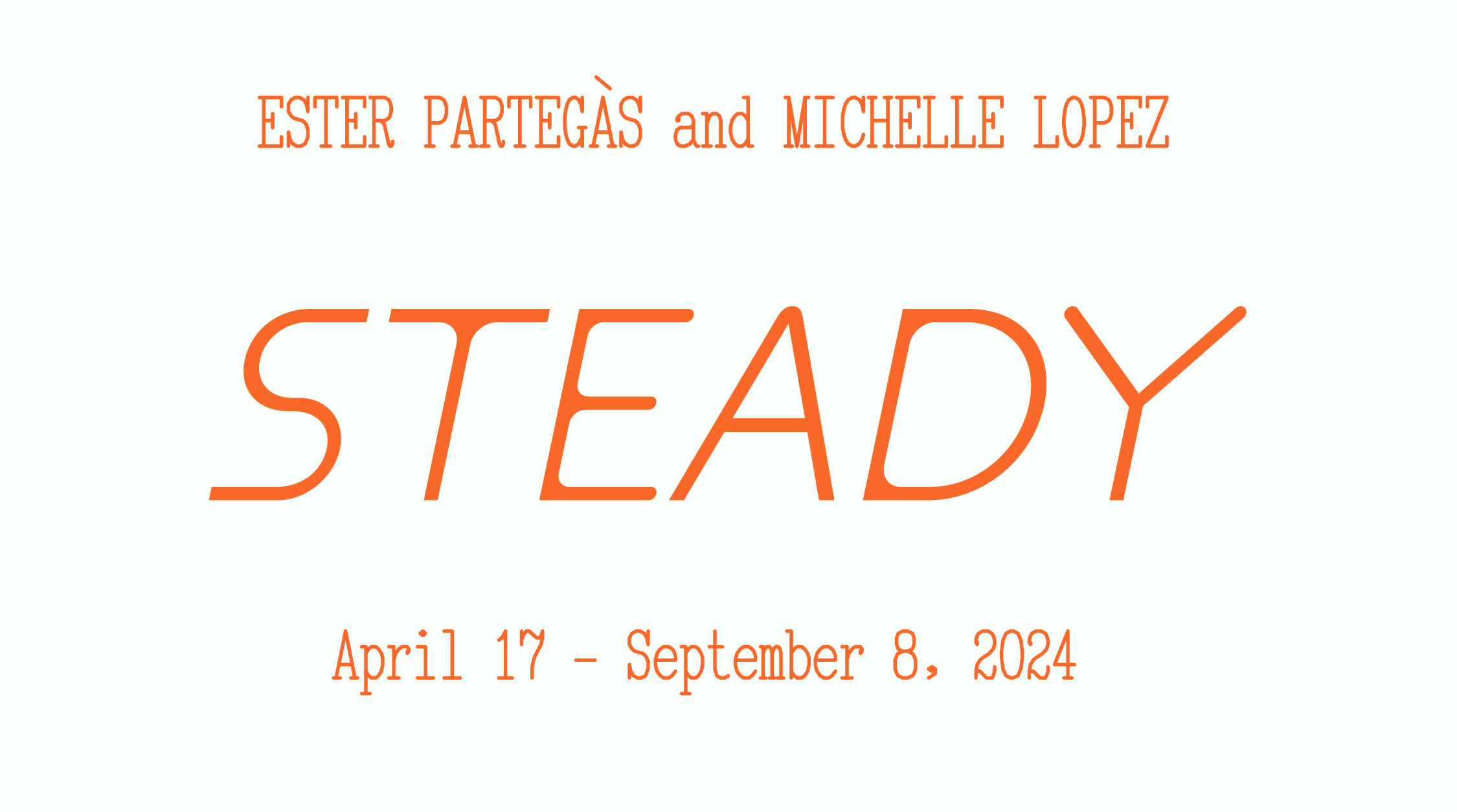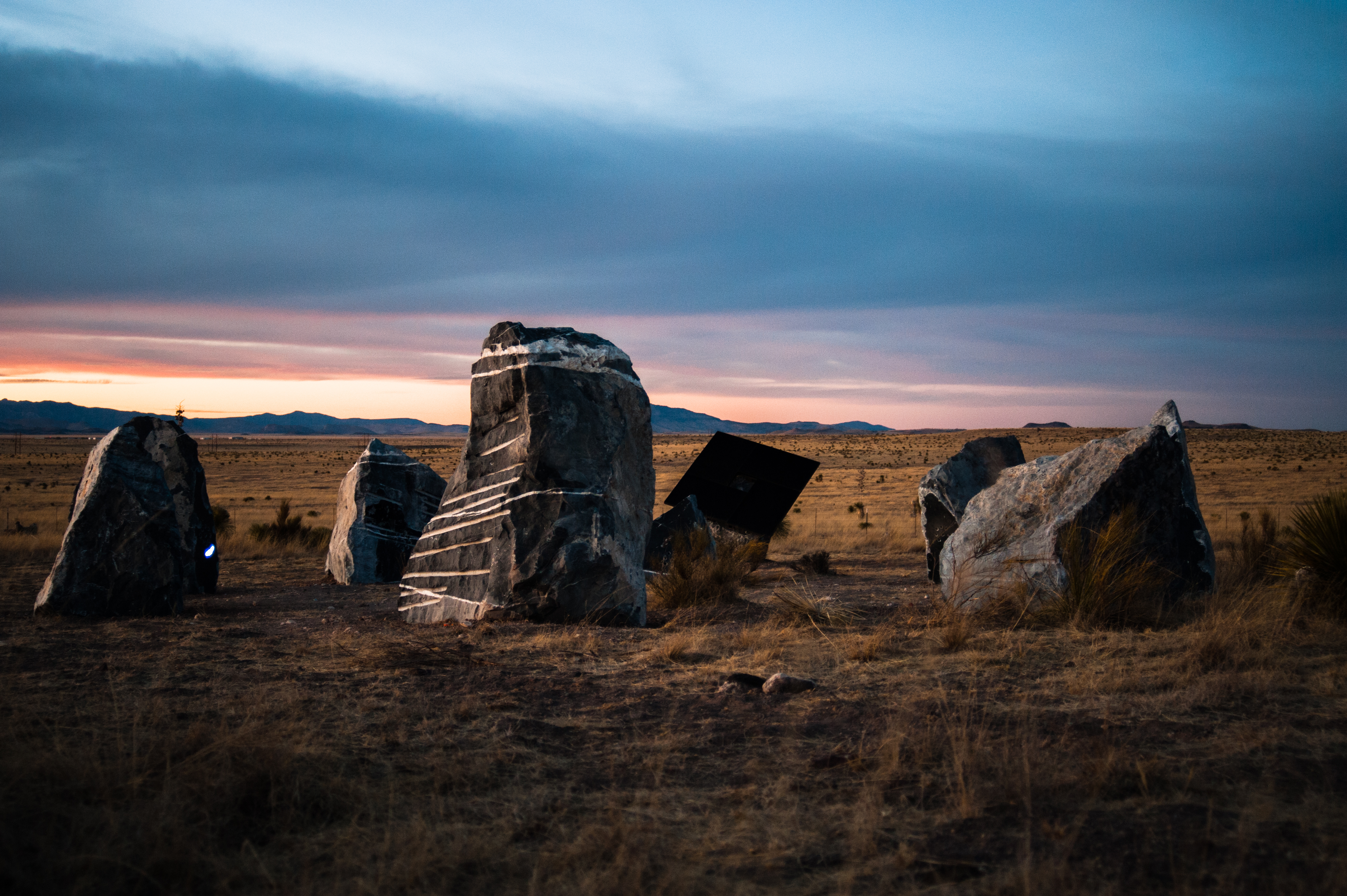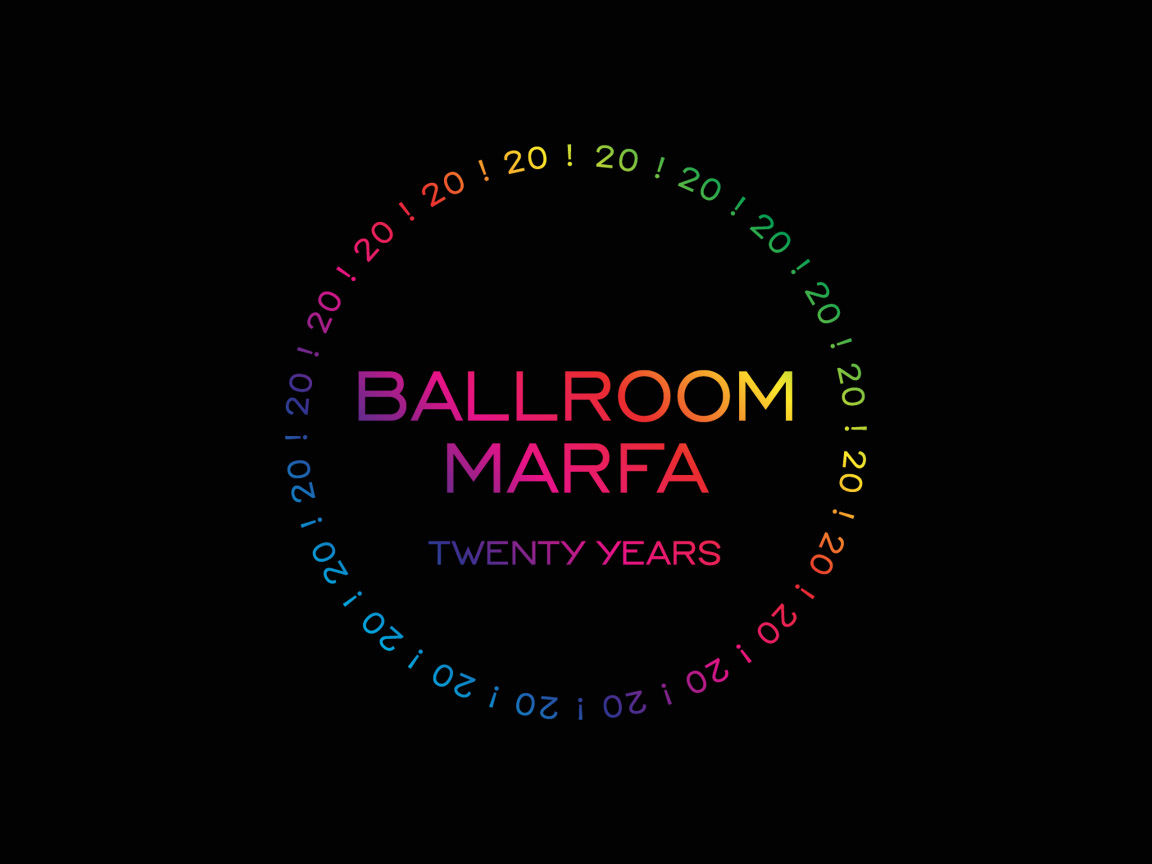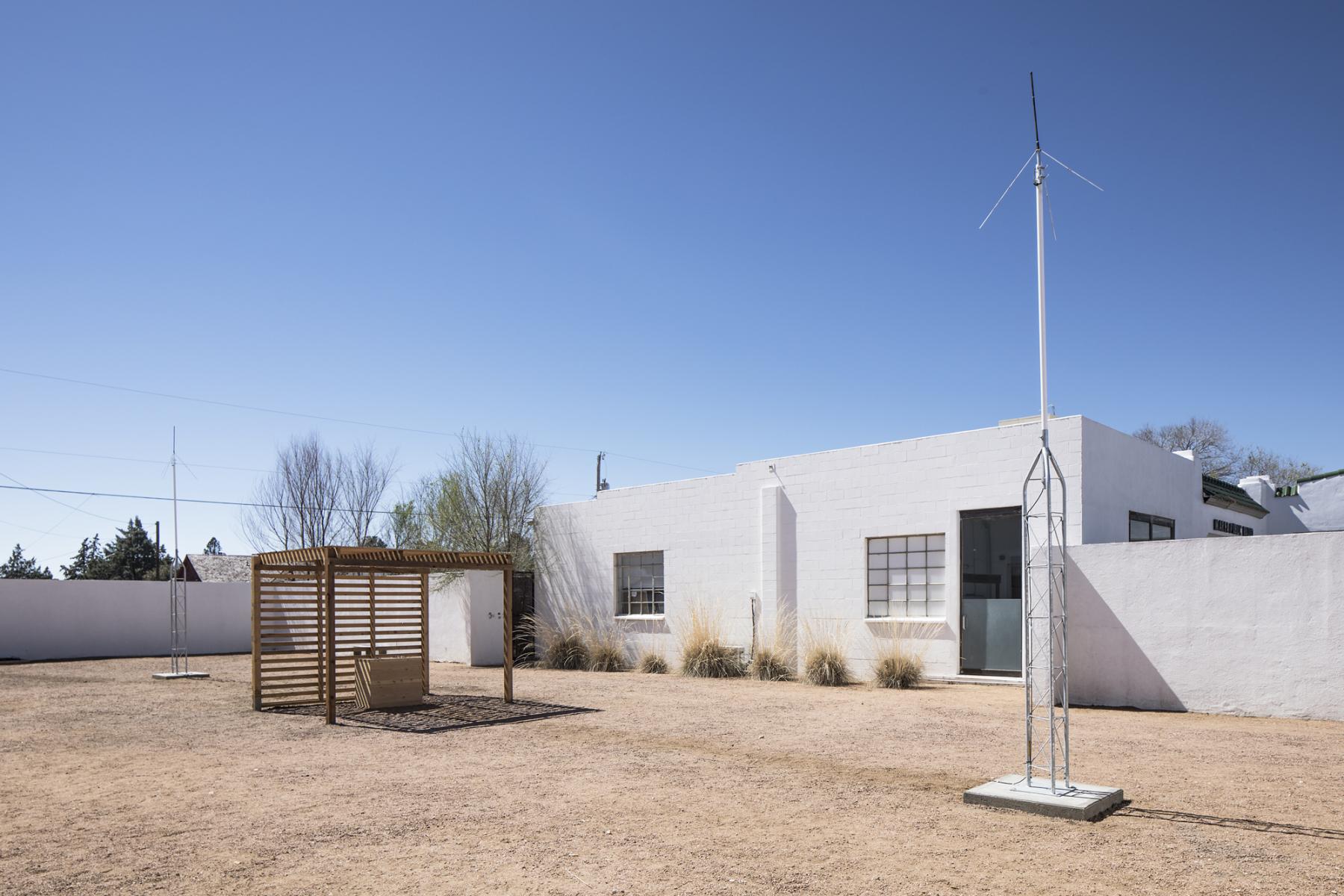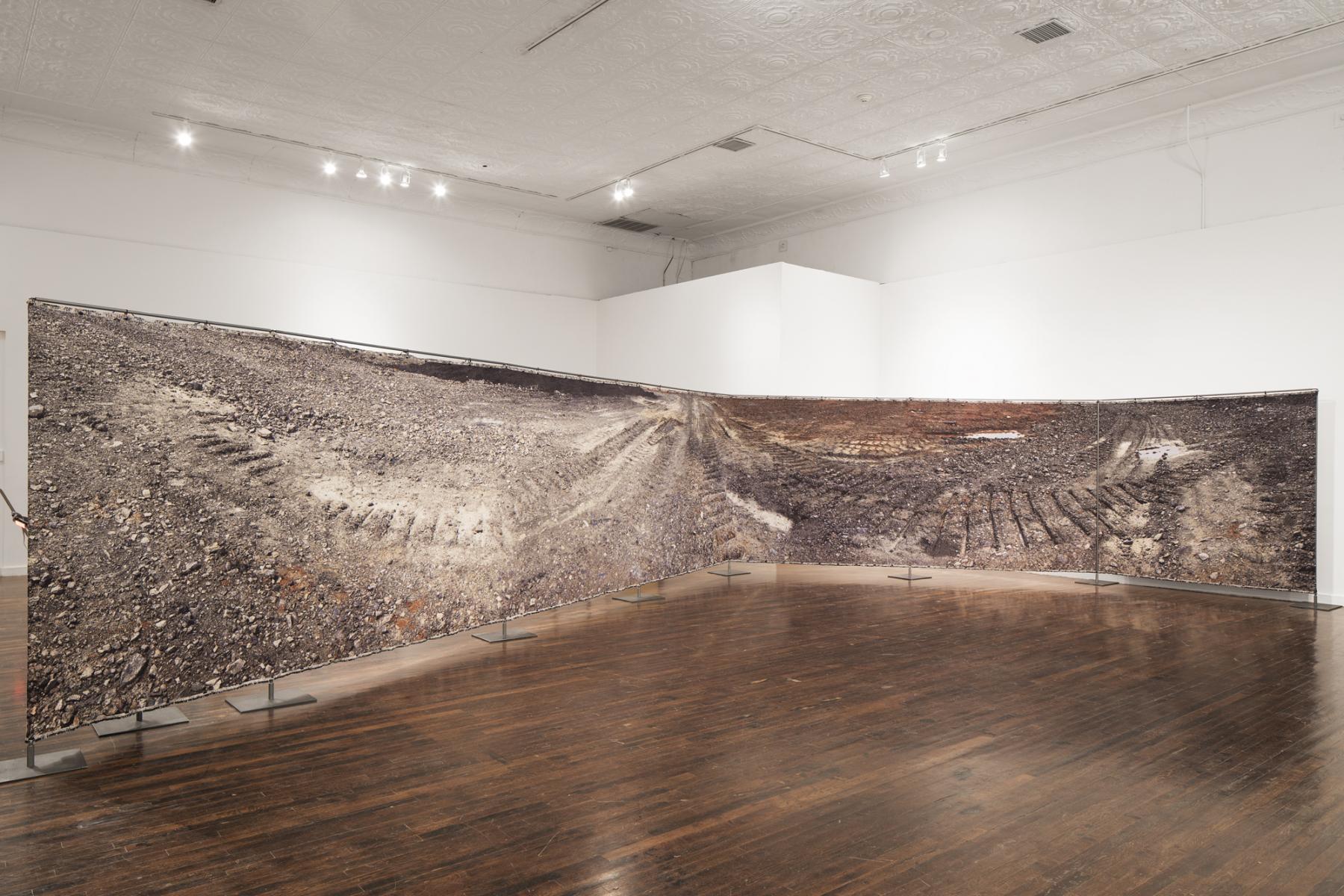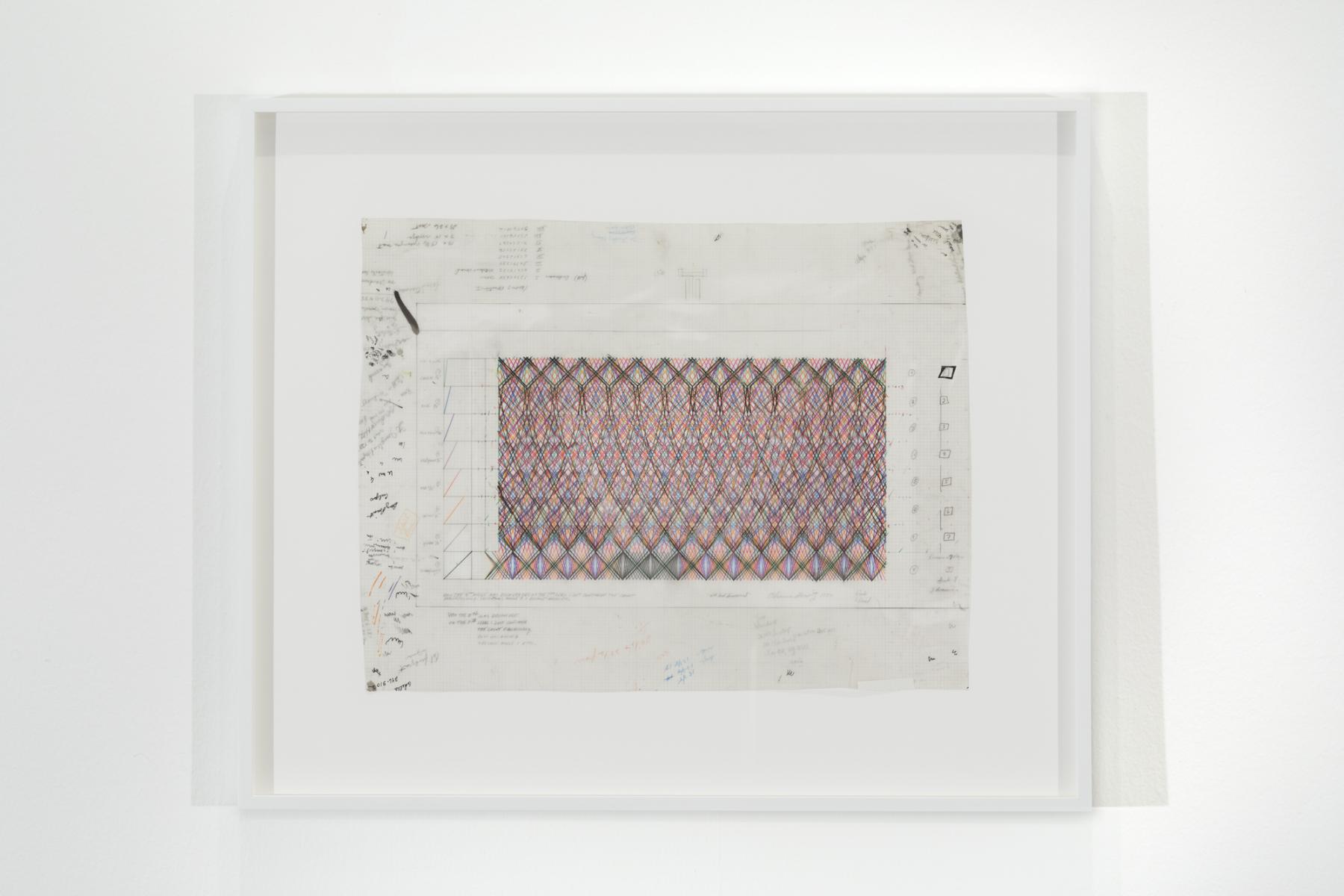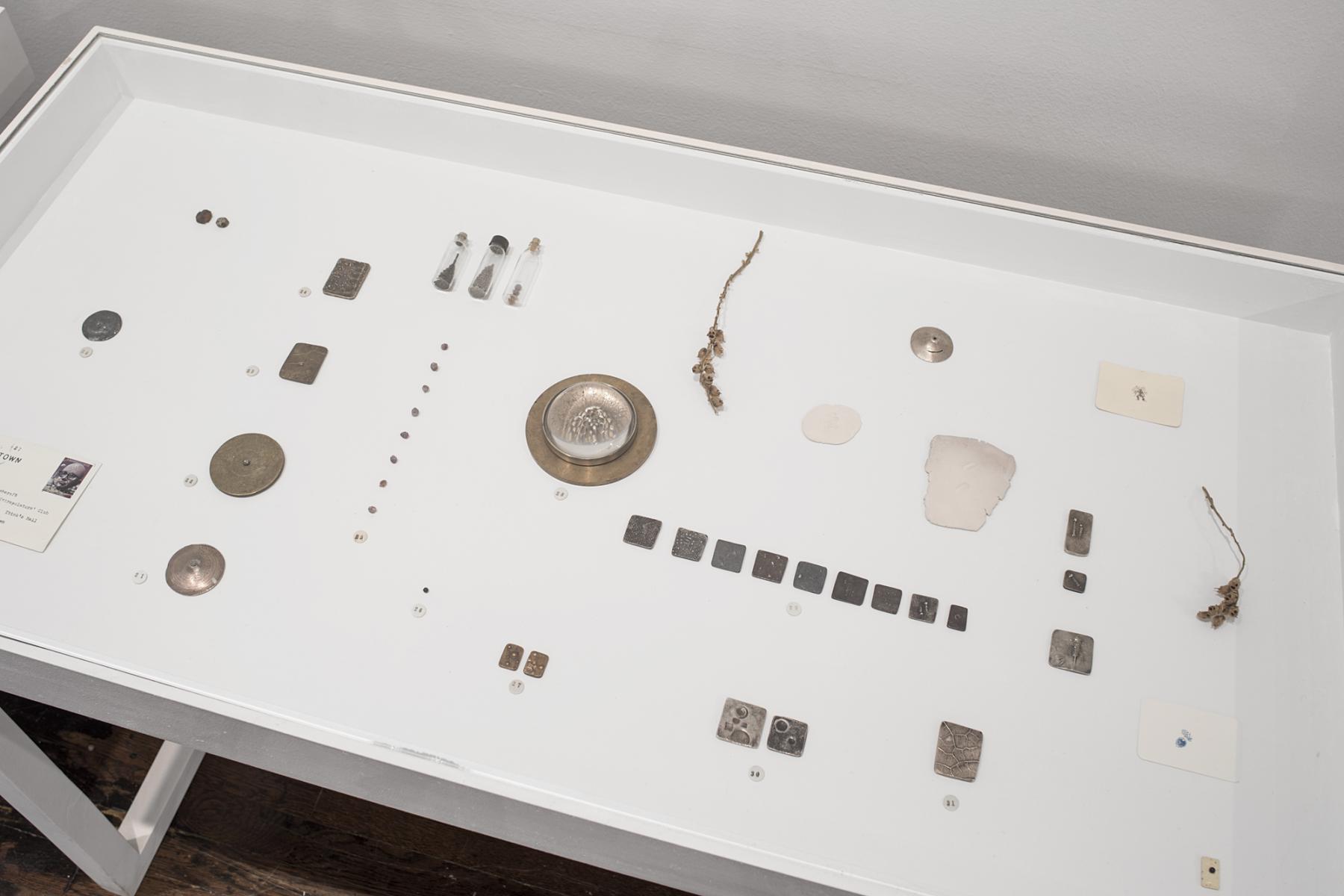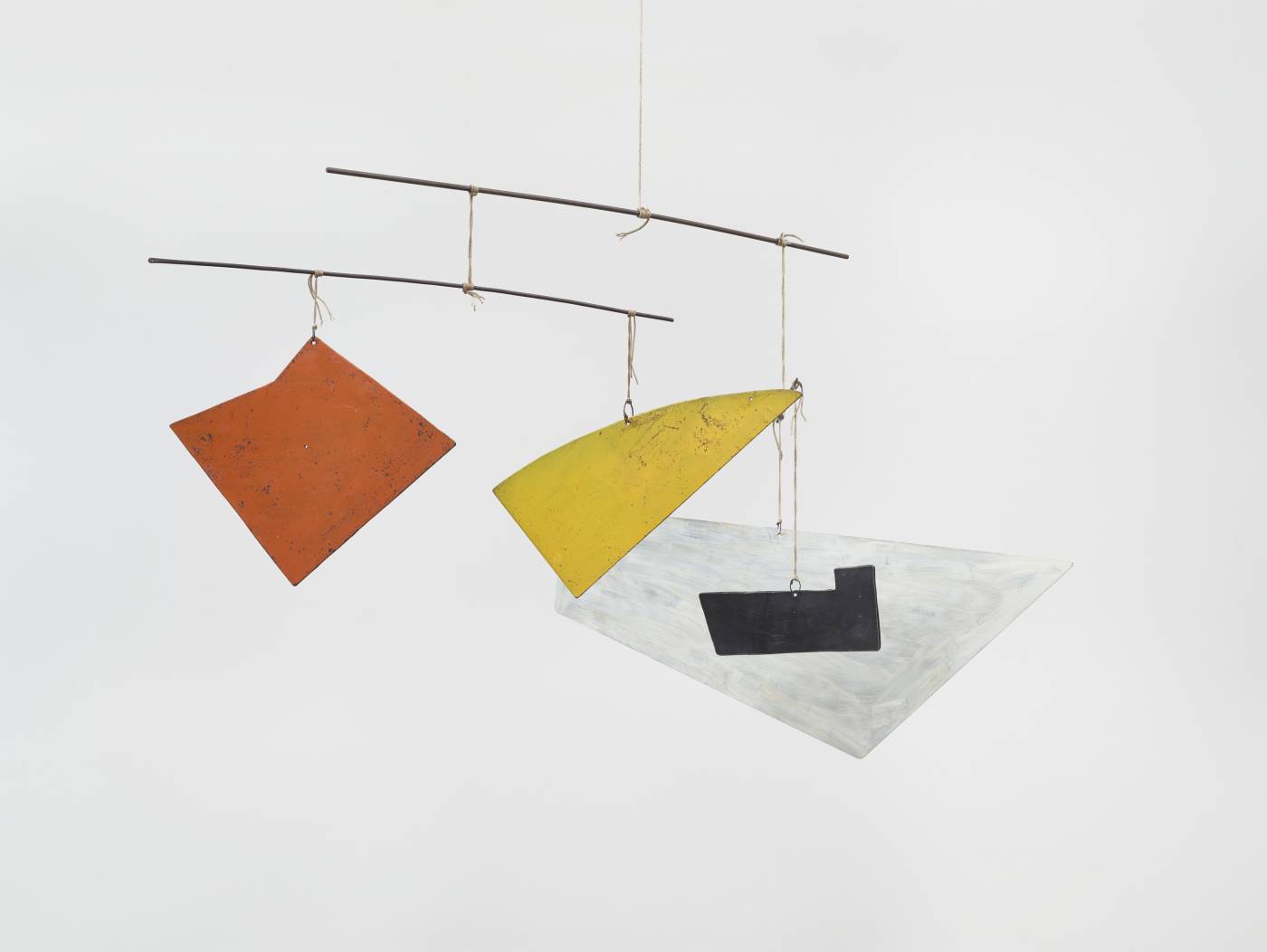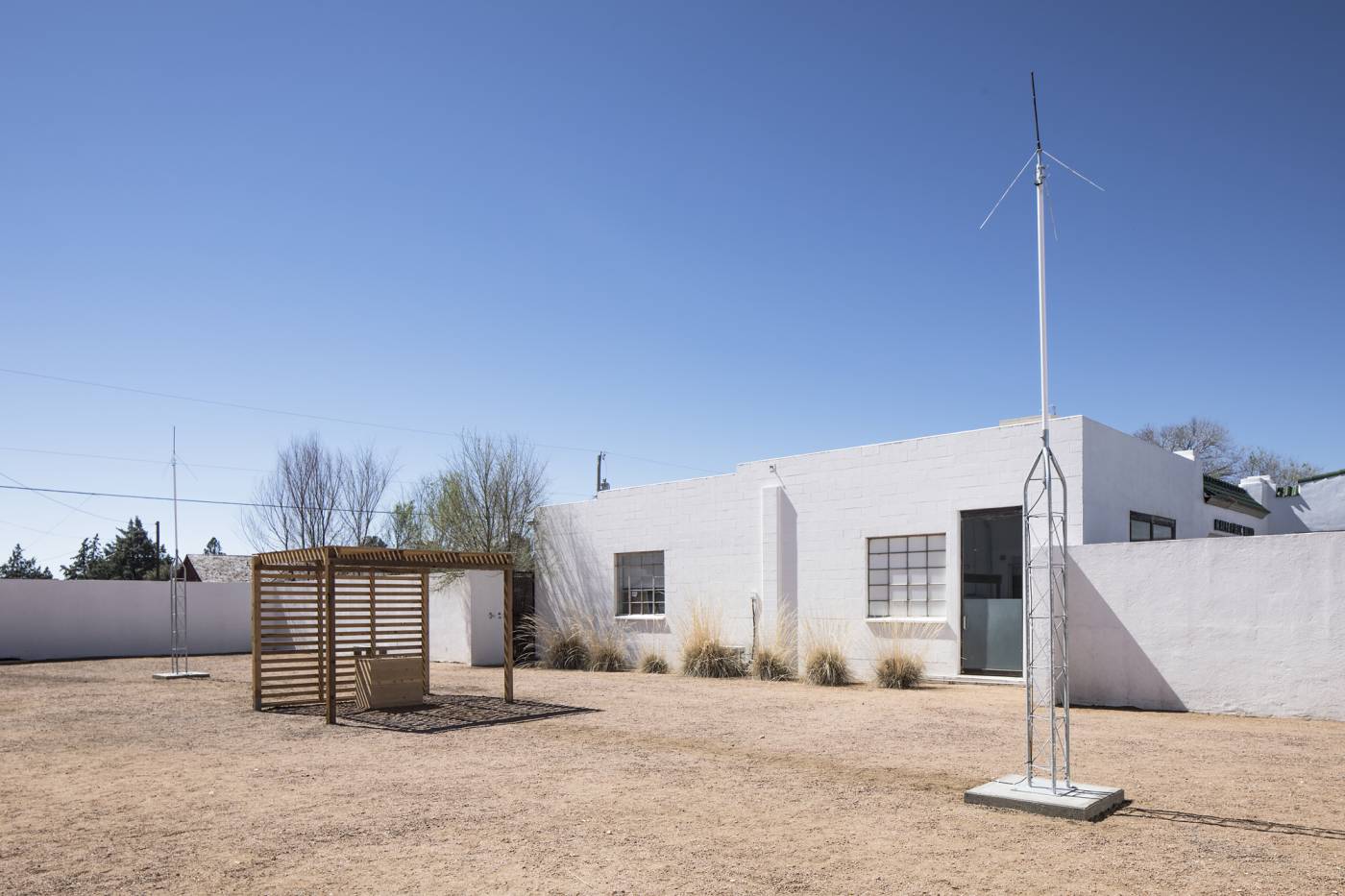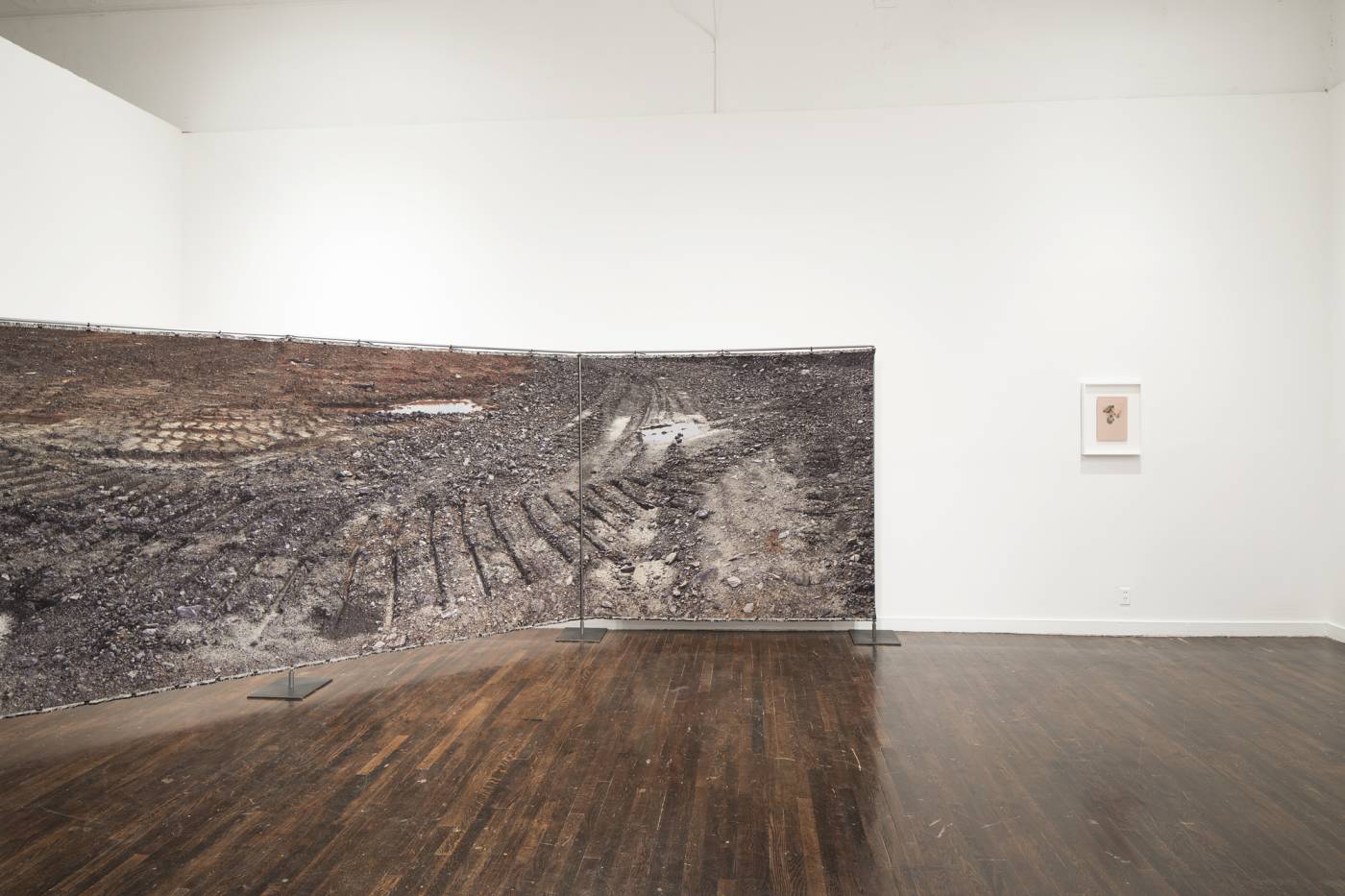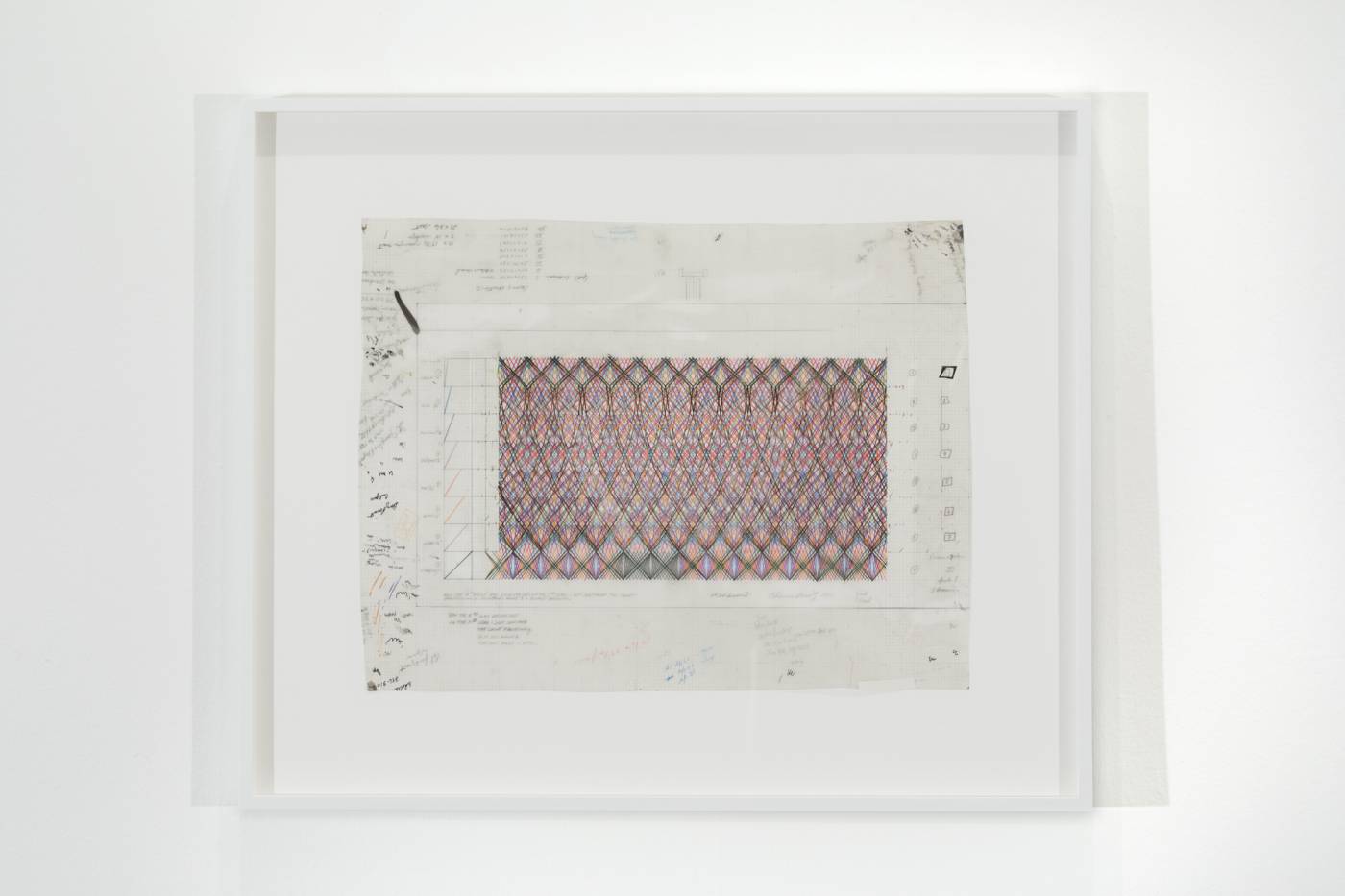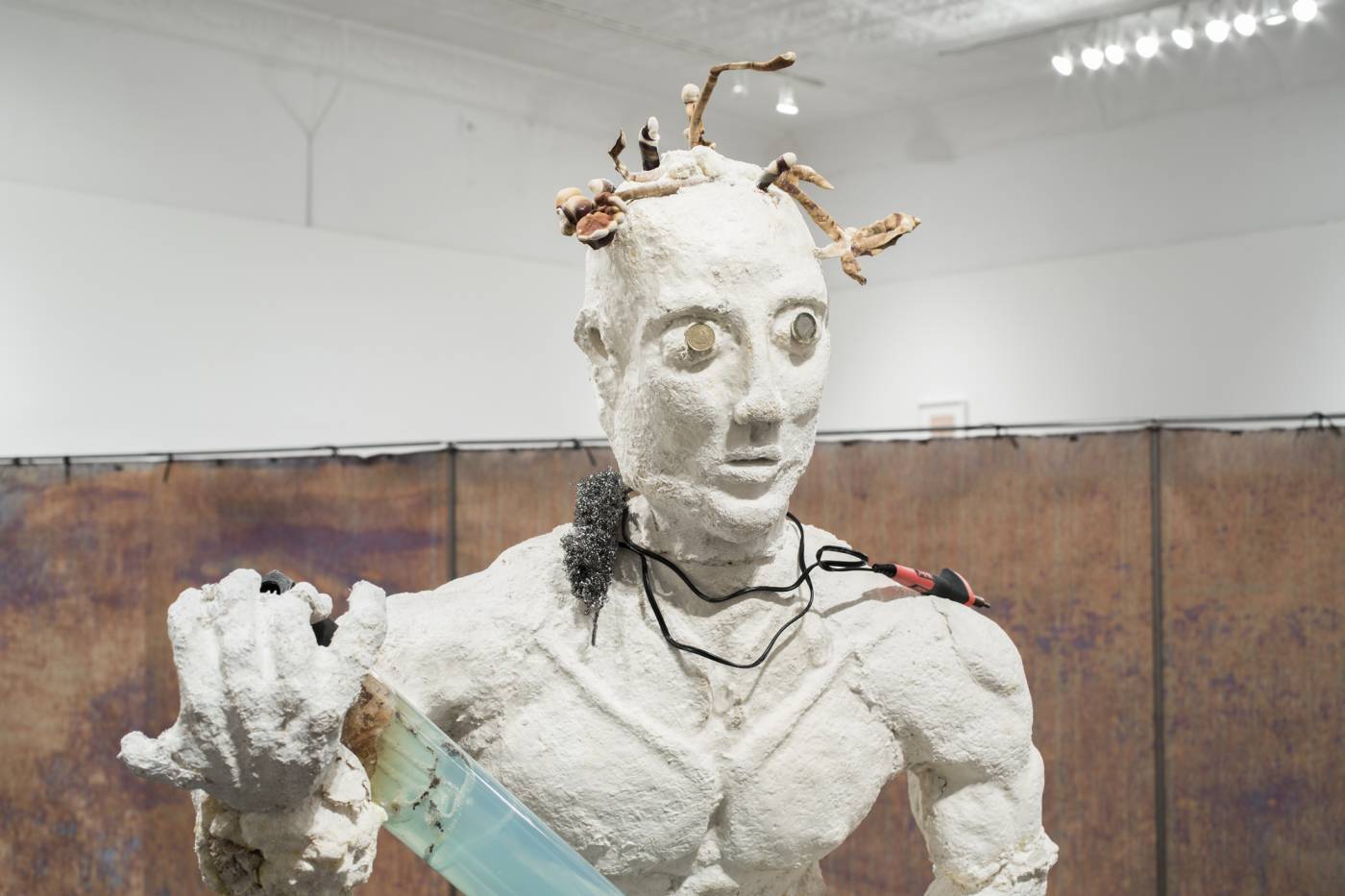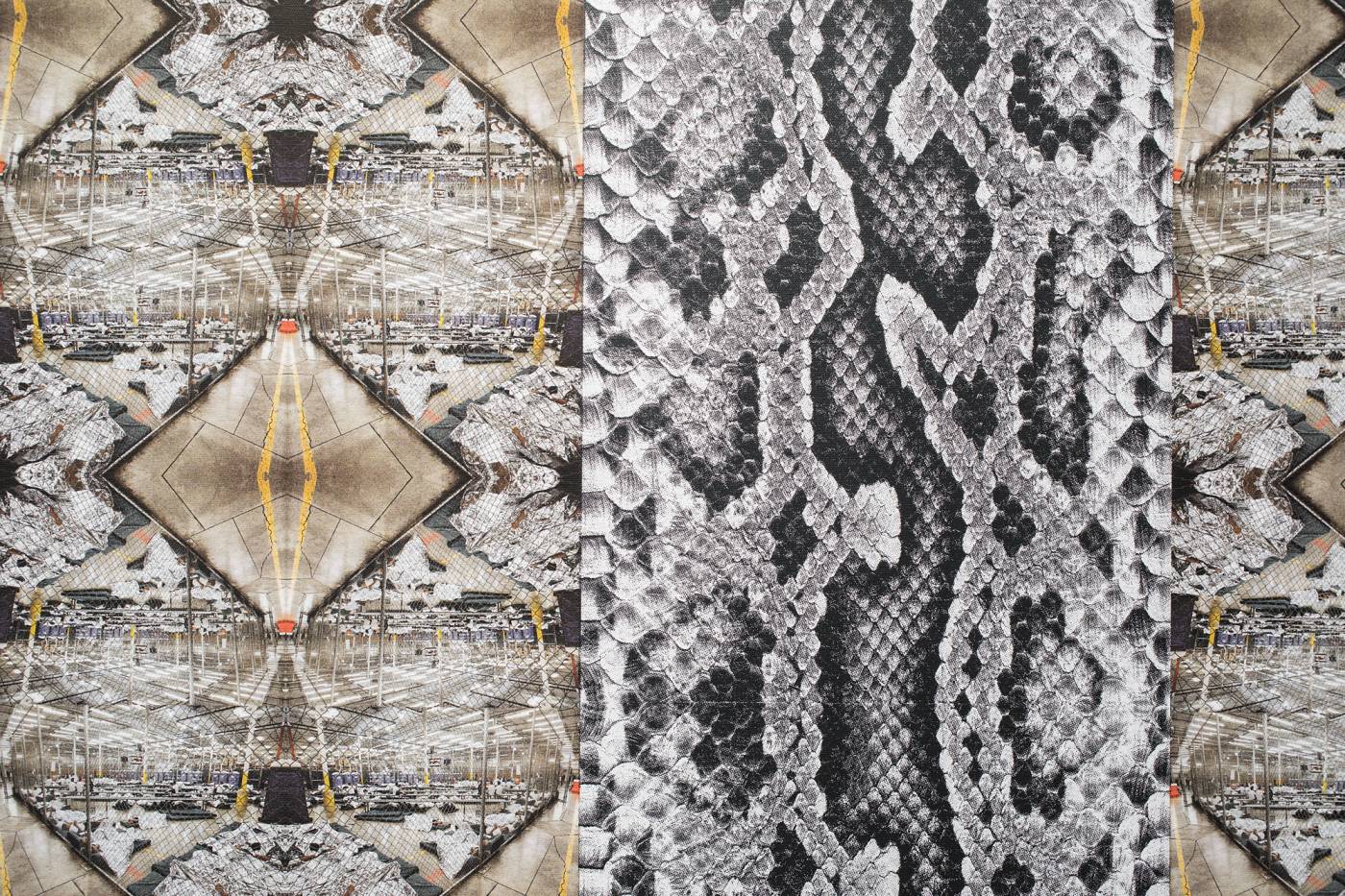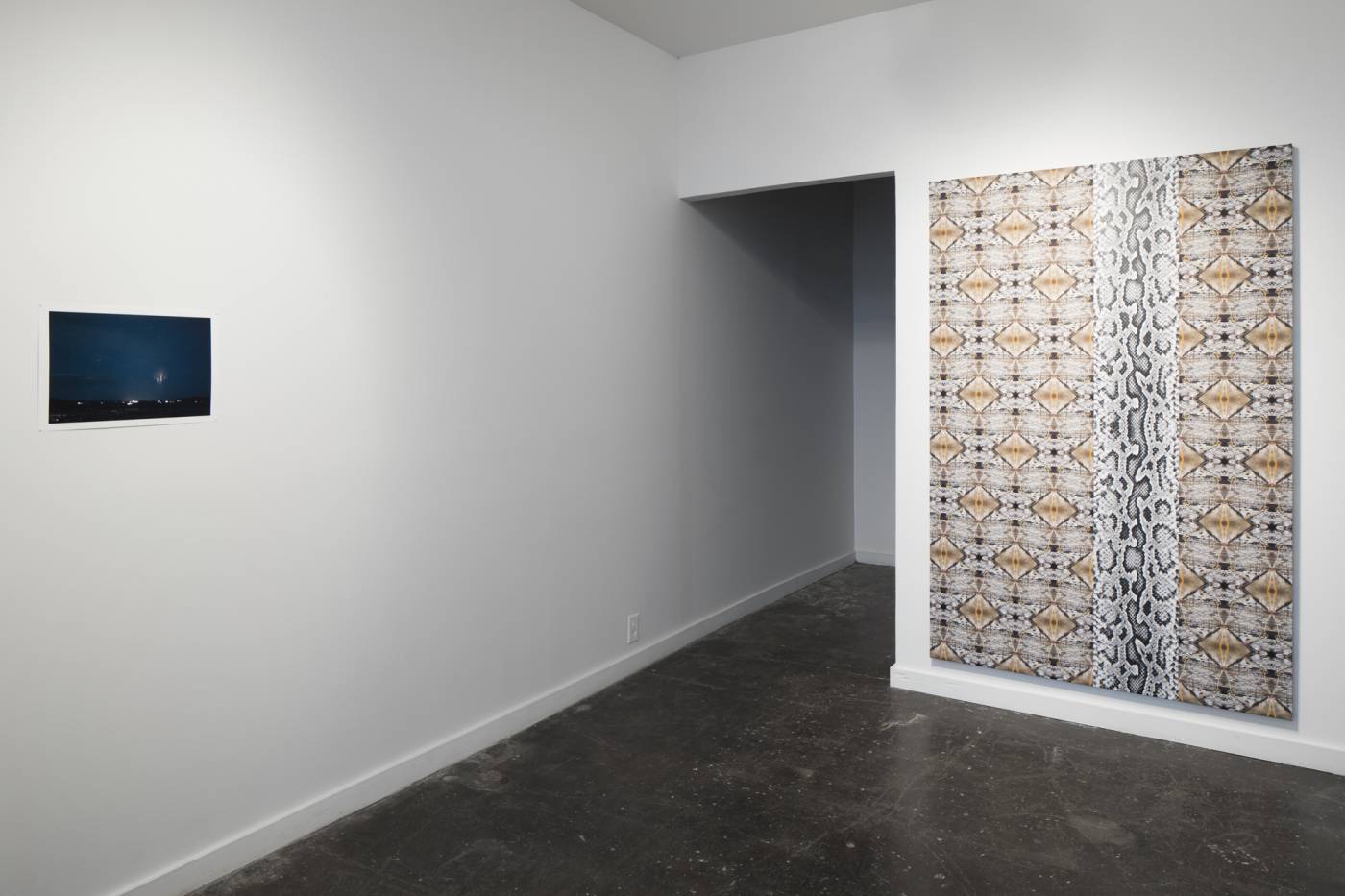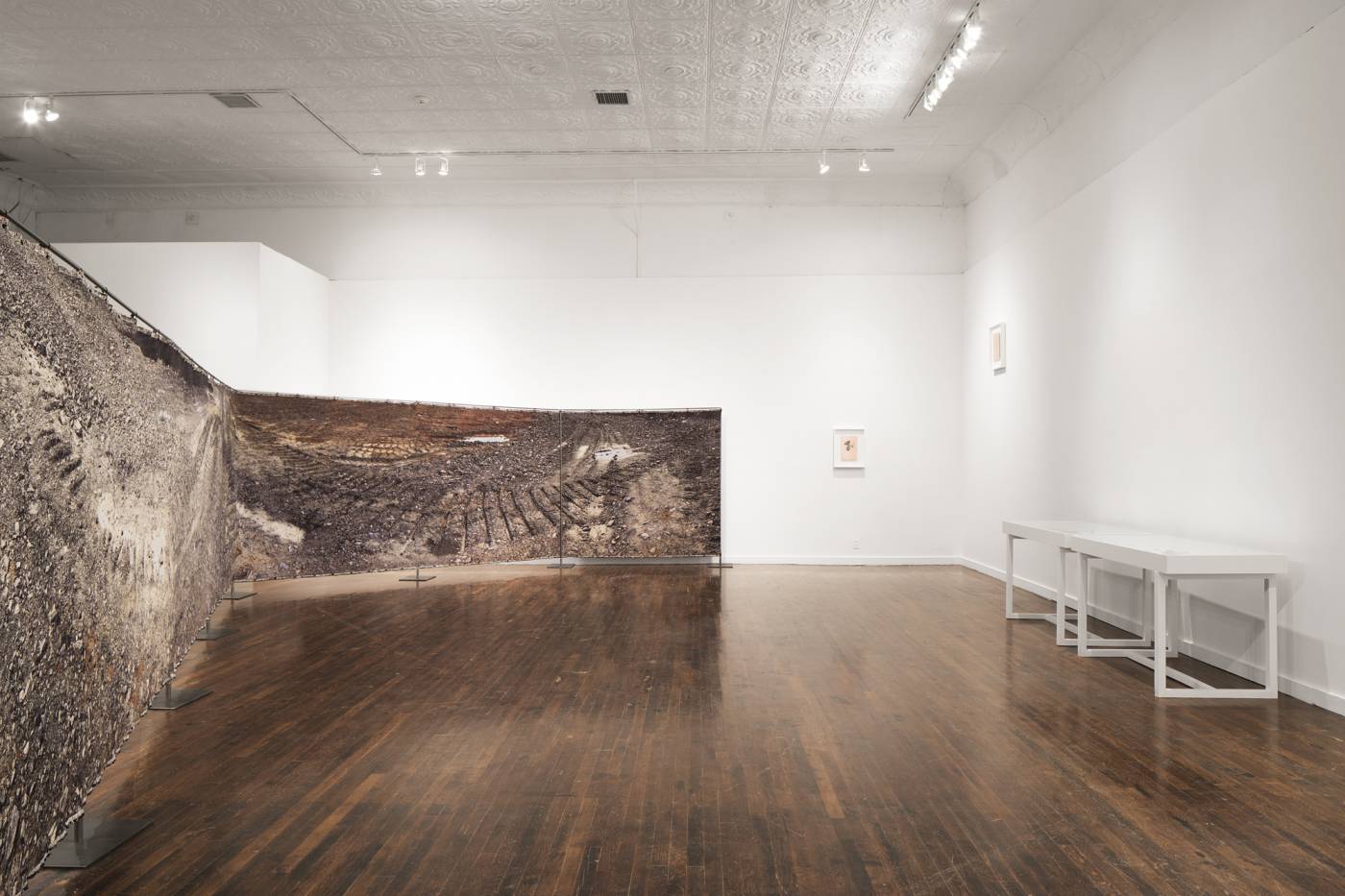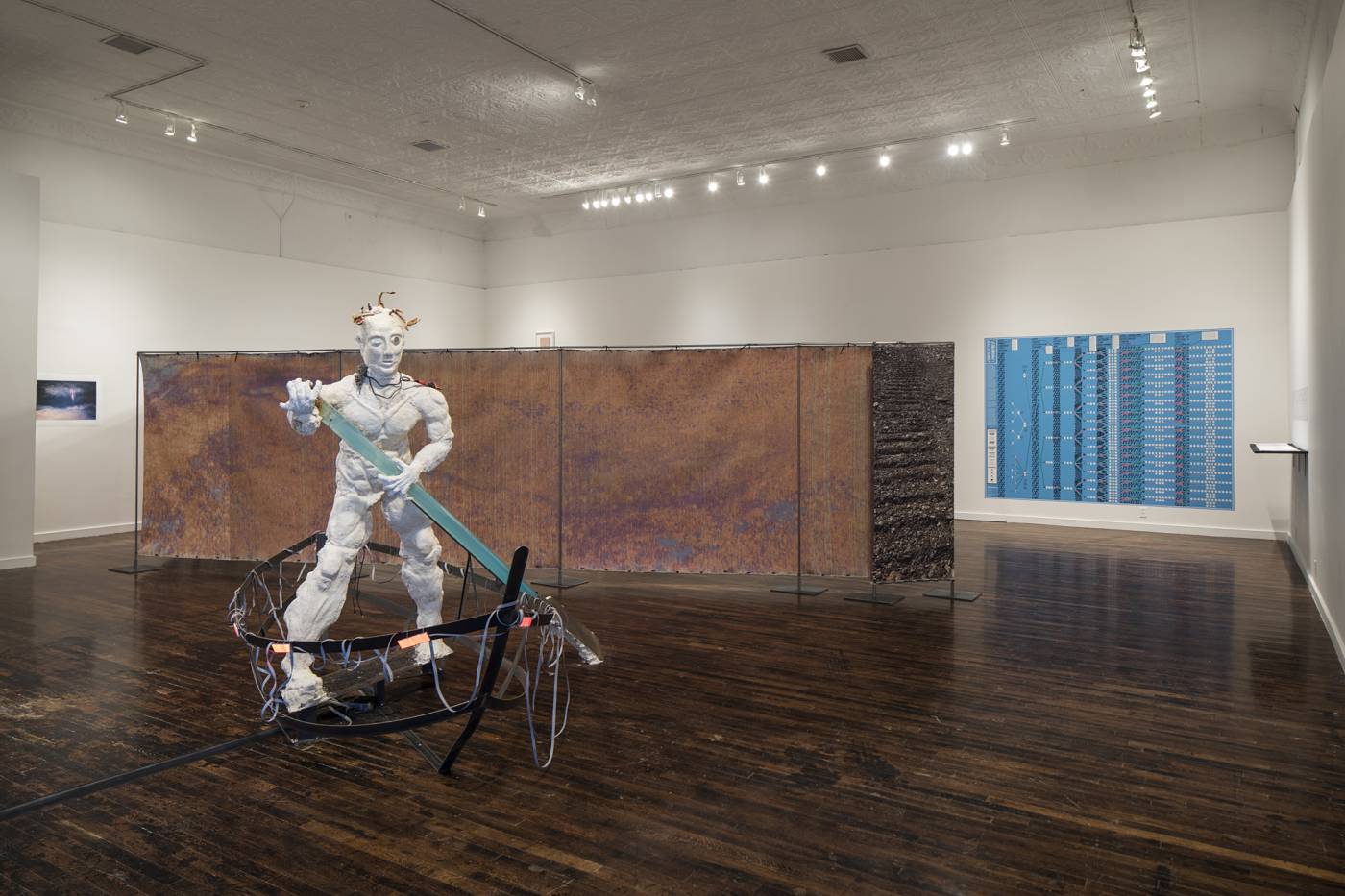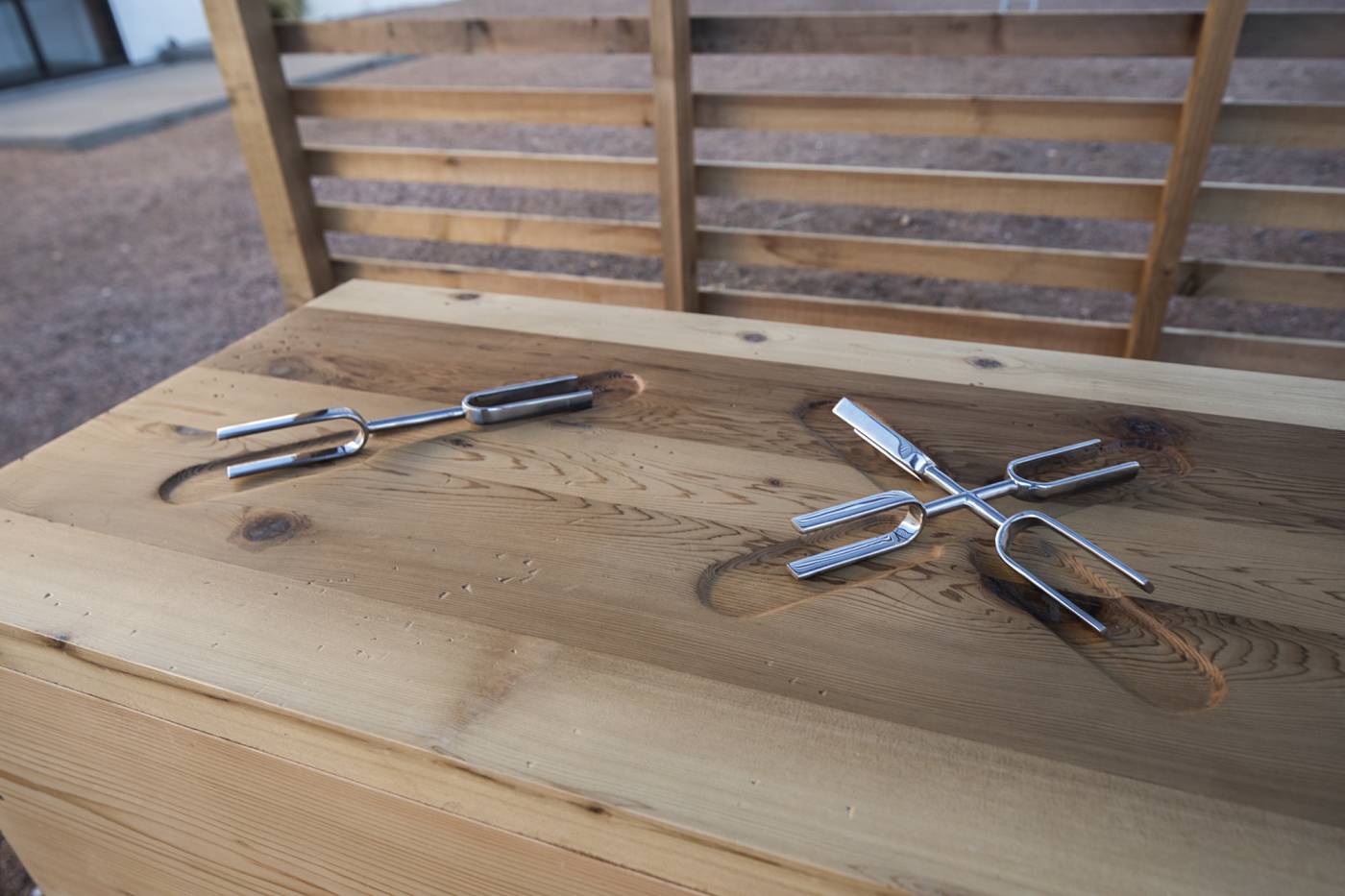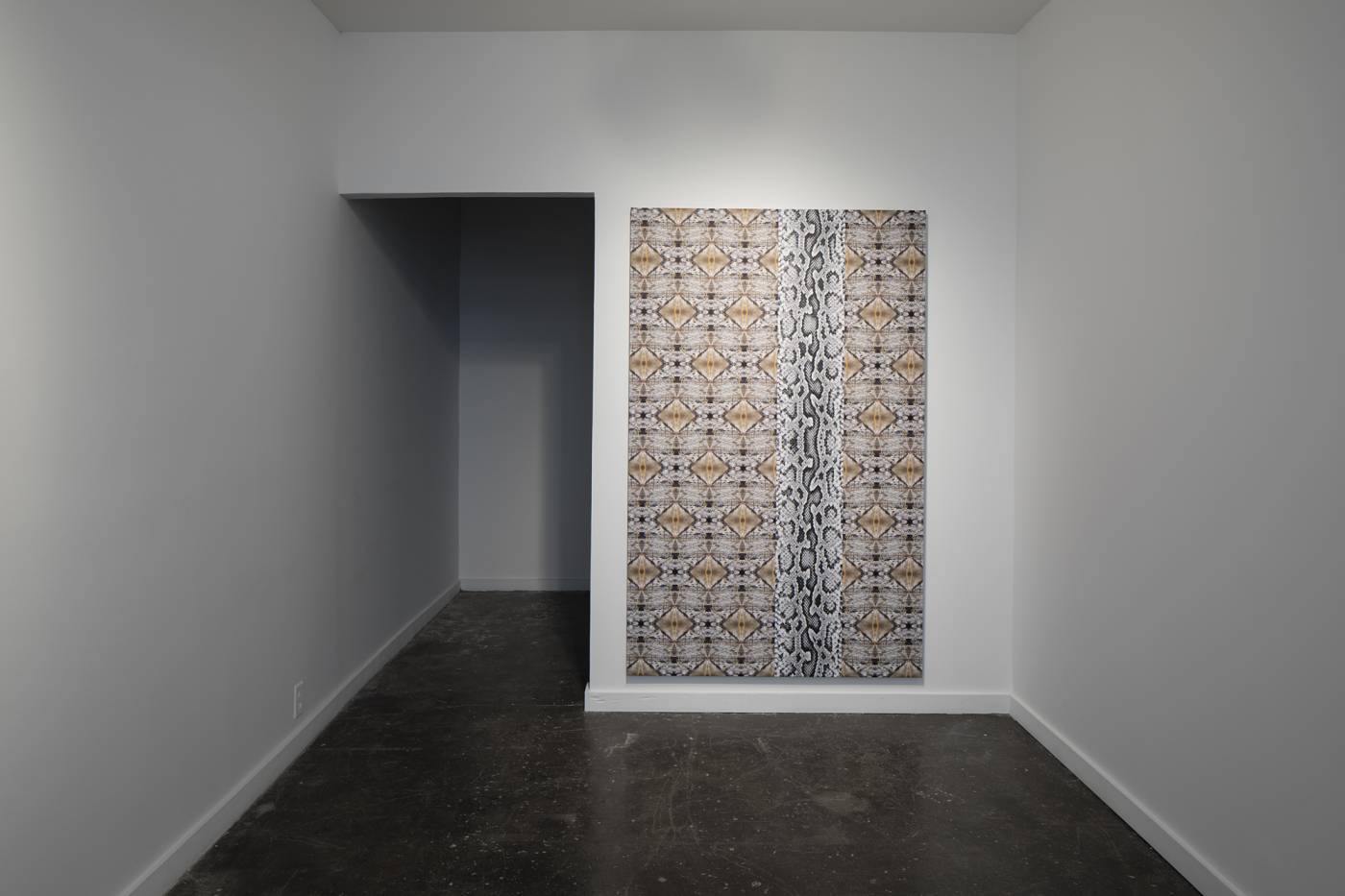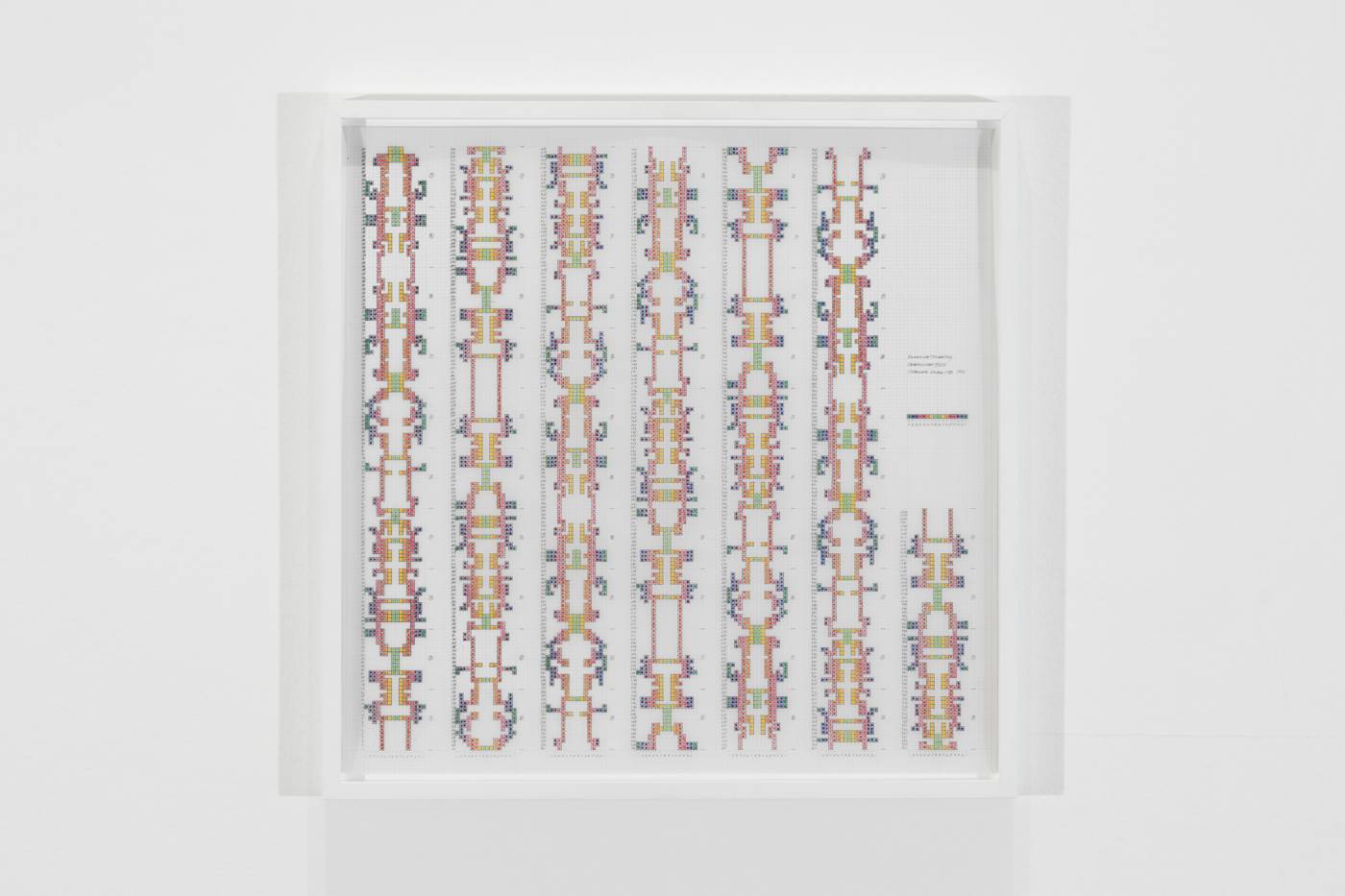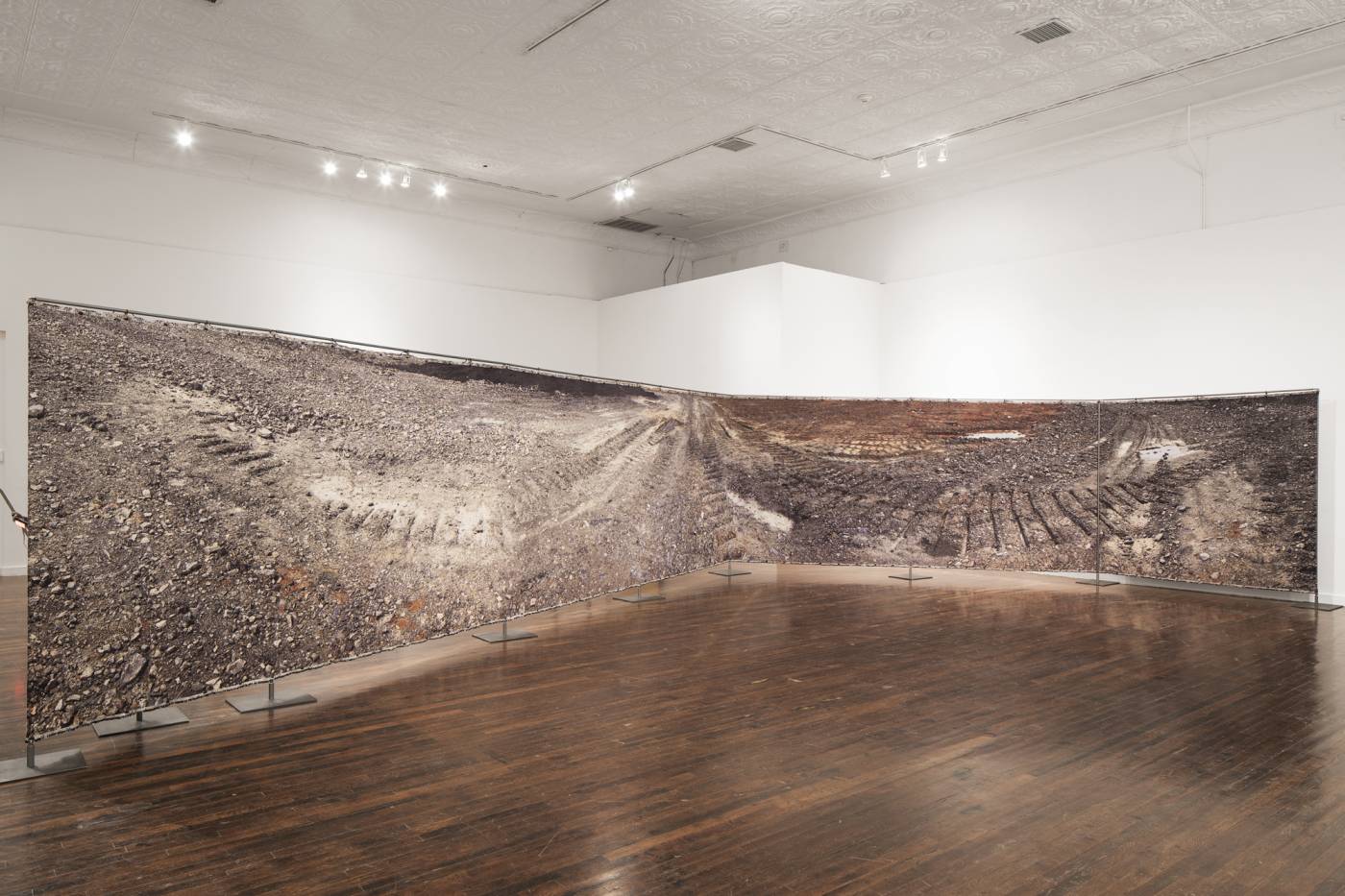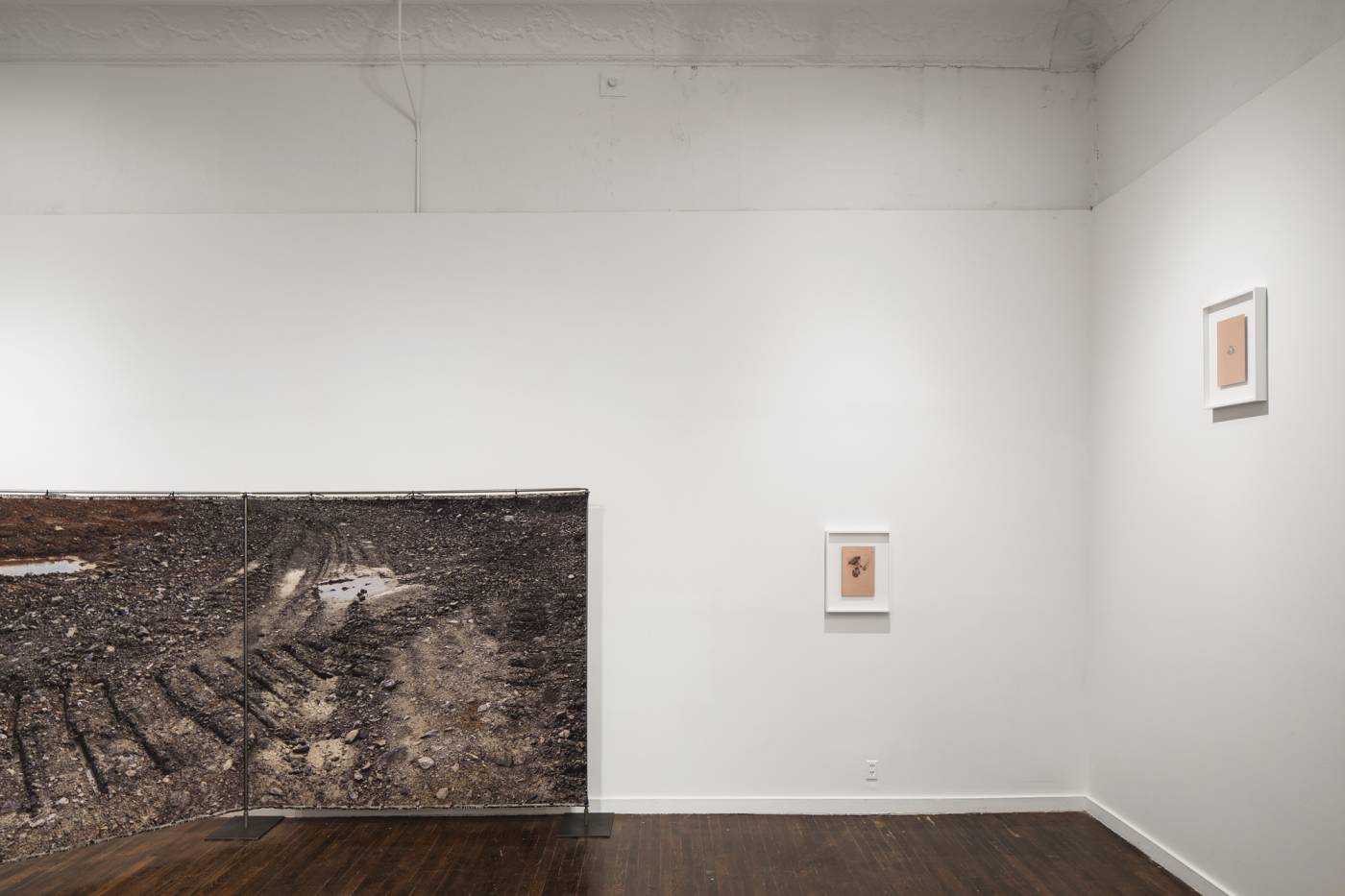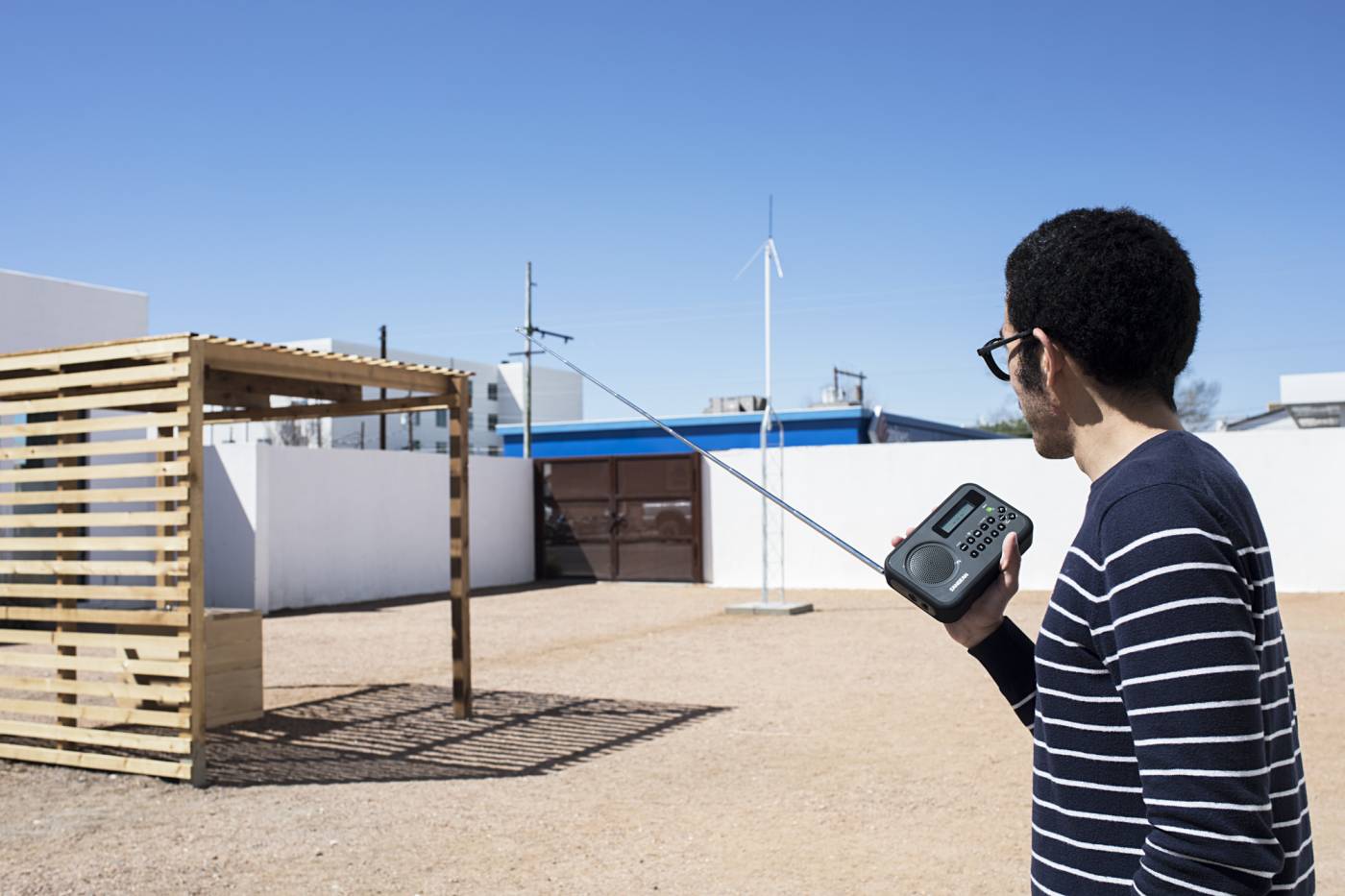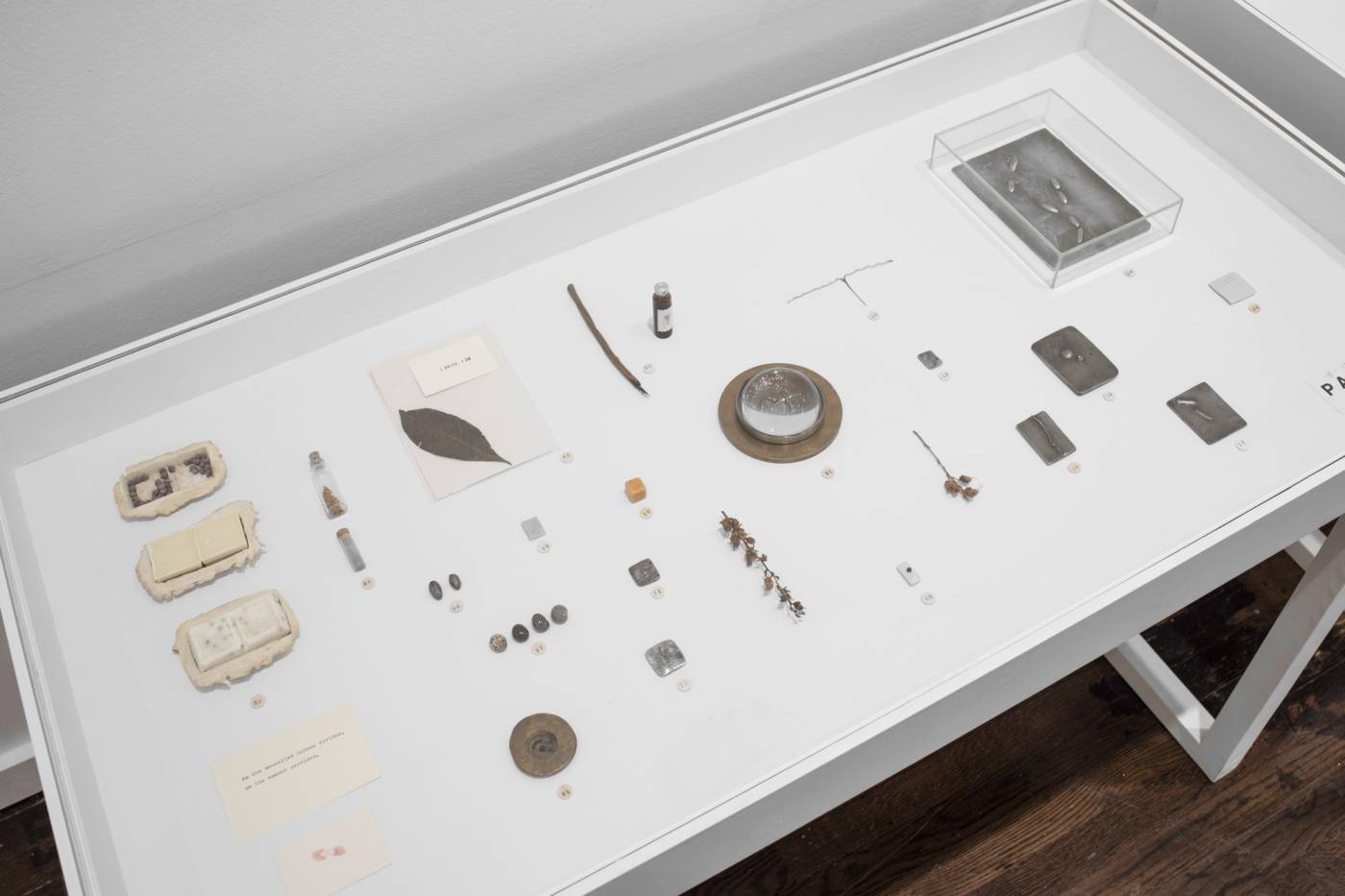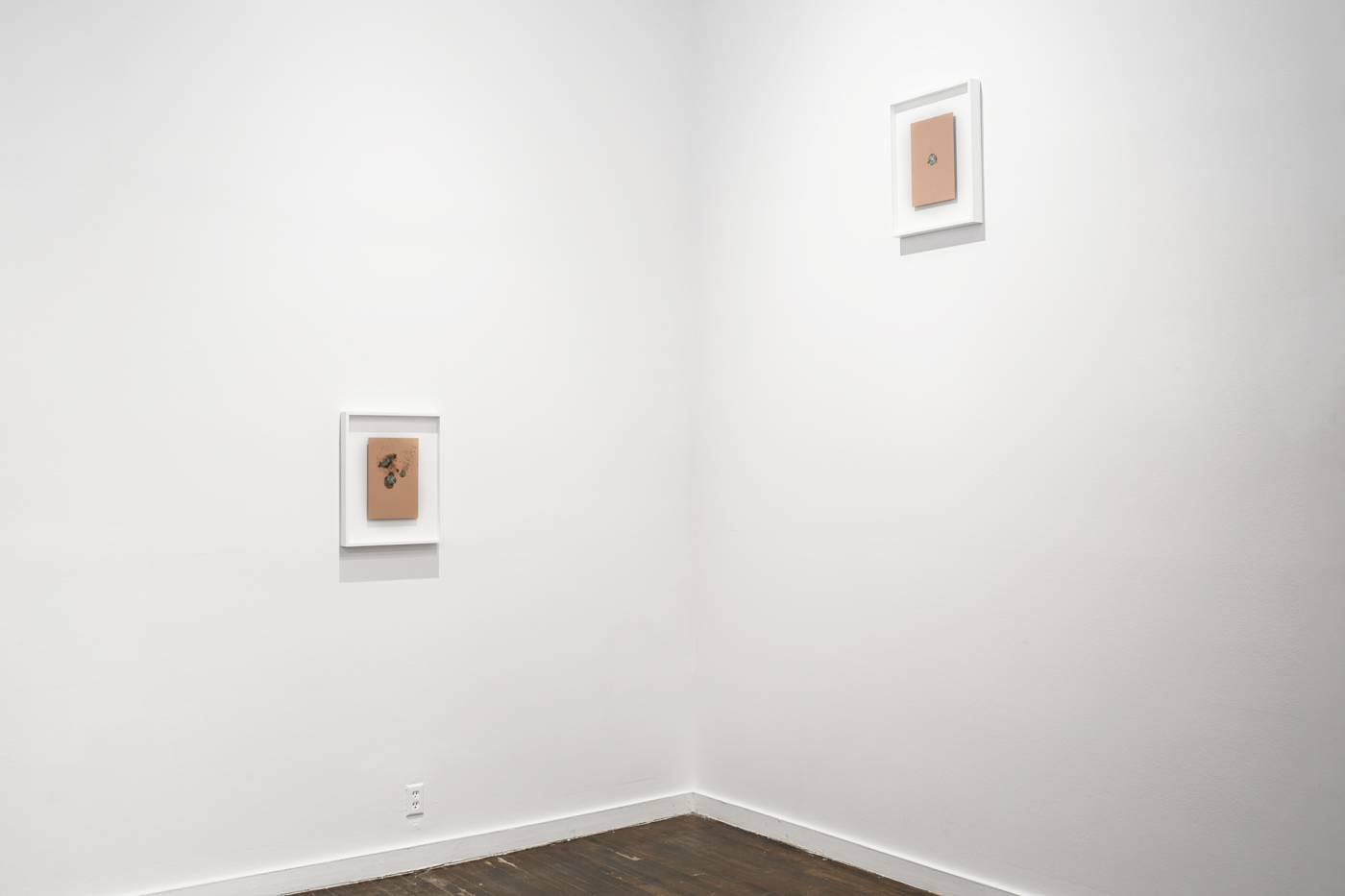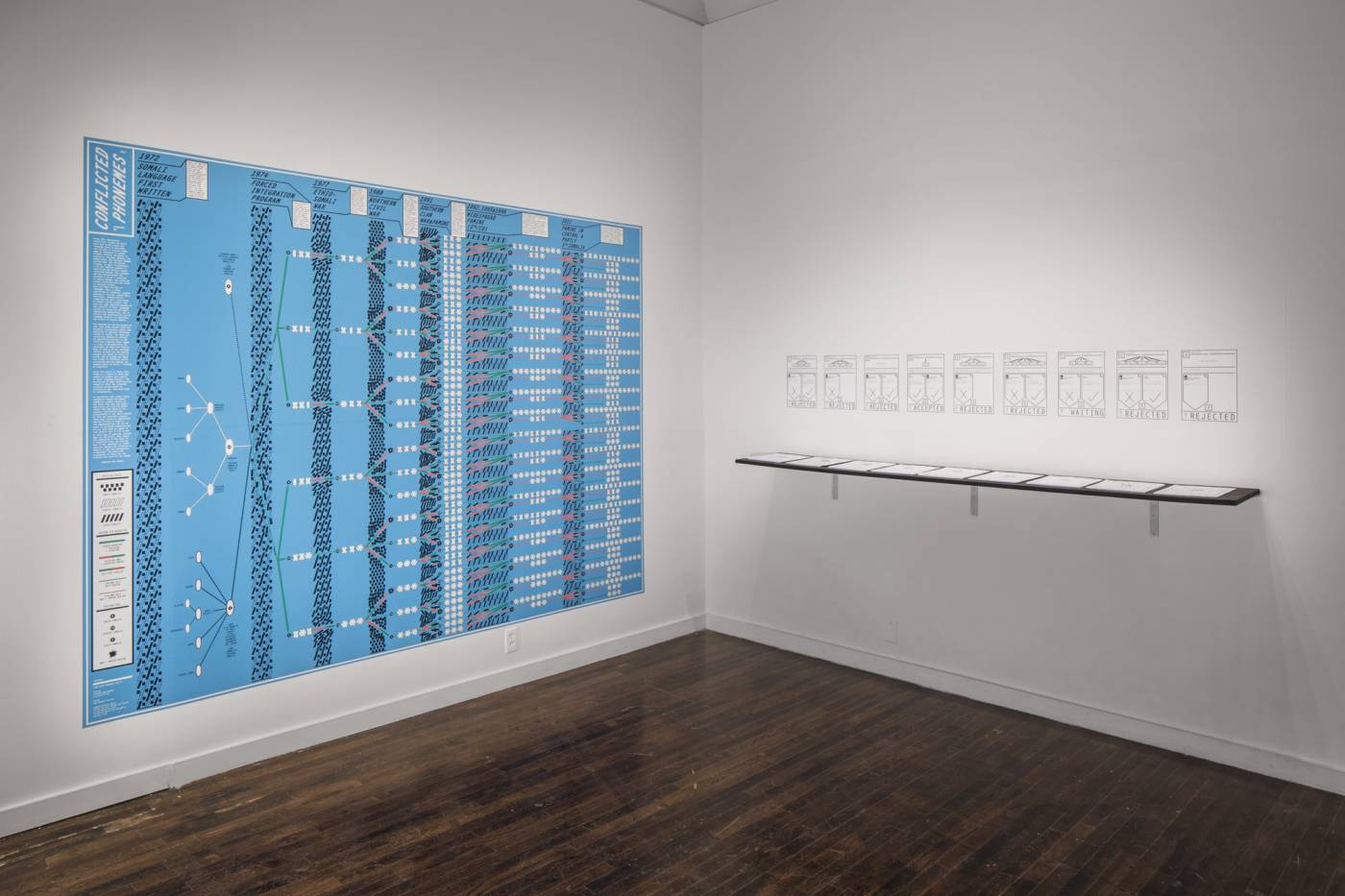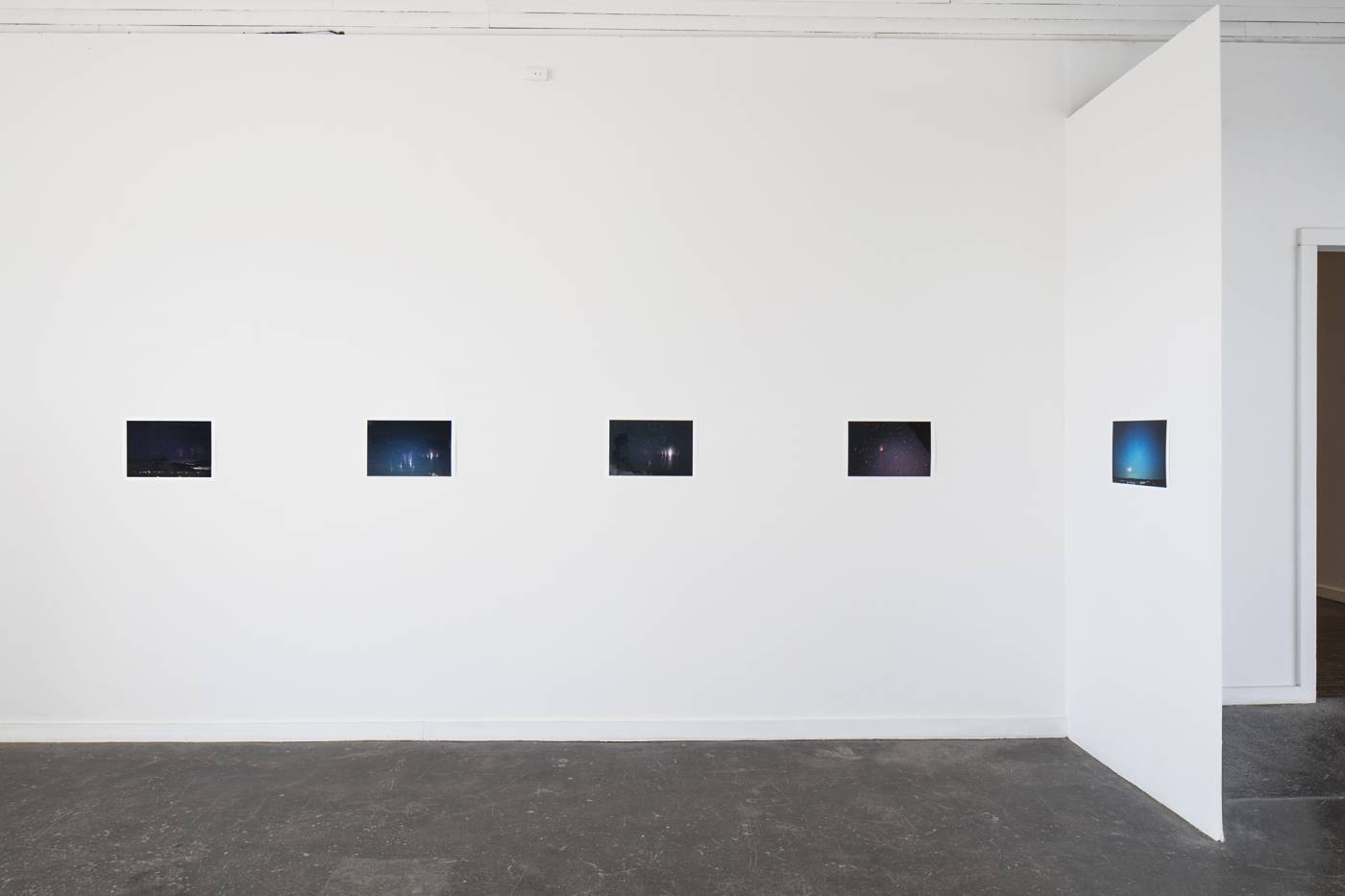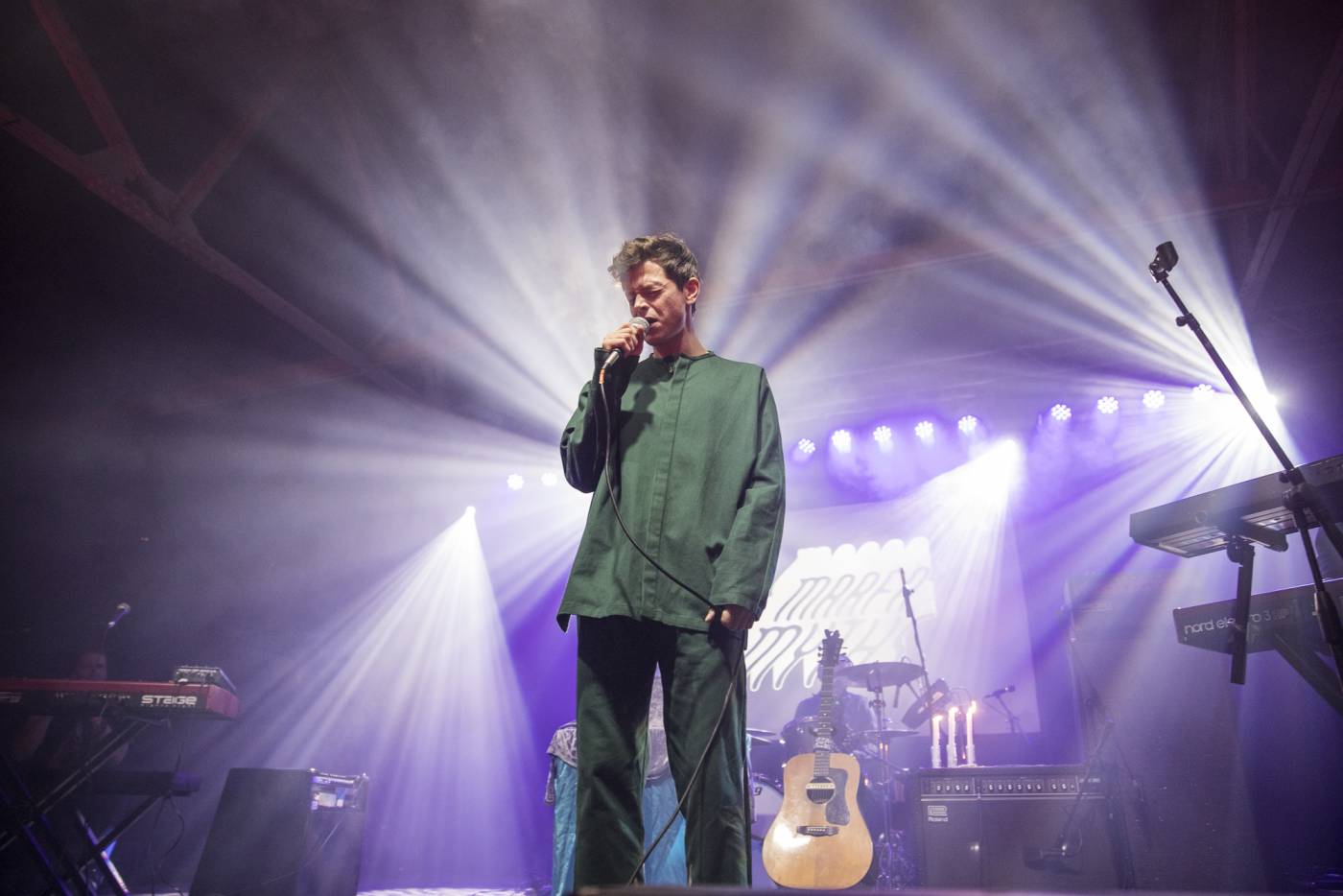
Exhibition
Lawrence Abu Hamdan | Thomas Ashcraft | Robert Buck | Alexander Calder | Beatrice Gibson | Phillipa Horan | Channa Horwitz | Lucky Dragons | Haroon Mirza | Douglas Ross
Strange Attractor explored the uncertainties and poetics of networks, environmental events, technology, and sound. The term “strange attractor” describes the inherent order embedded in chaos, perceivable in harmonious yet unpredictable patterns. Sound and music pervaded the exhibition, physically or latently, through production or allusion. Visitors were confronted with leitmotifs of capital, transmigration, and asylum.
Strange Attractor invited the collision of historical and contemporary artworks in diverse media, including Alexander Calder’s previously unseen, noise-making, hanging mobile Clangors from 1942, a sister work to The Clangor, which Calder described as “three heavy plates that gave off quite a clangor.” Calder described sound as being integral to the effect of “disparity” in his compositions: “Here was just another variation. You see, you have weight, form, size, color, motion and then you have noise.” Clangors was presented alongside Channa Horwitz’ numerological graphic scores 8th Level Discovered from 1982 and Sonakinatography I Composition XXII from 1991, as well as contemporary pieces from artists working in a wide range of mediums.
The exhibition debuted Agreements (5—10), a commission from Lucky Dragons, the collaborative project of Sarah Rara and Luke Fischbeck. Custom designed tuning forks were installed in the Ballroom courtyard, and their tones broadcasted throughout the town of Marfa on overlapping radio frequencies in a continuously evolving sonic sculpture. Listening while moving, one could hear geographical borders as they were crossed. The tuning forks, one double-sided and the other four-sided, resonate with two and four narrowly-separated pitches, respectively. Each pitch corresponded to one of the six radio transmissions, serving as the basis for the music in that signal.
For the newly commissioned work Foreign Exchange, Phillipa Horan worked with a commercial biotech laboratory to produce the first large-scale figurative sculpture grown from mycelium, the single cell root system of mushrooms. Foreign Exchange came into fruition from an interest in democratic networks and systems with an absent central point of power: The mycelium material is similar to the Internet, and other organisms’ webbed biospheres, such as honeybee hives and ant colonies. The work is a figurative sculpture of Charon, the mythological ferryman who transports the dead across the river Styx, and was literally grown––at certain points it was alive and unpredictable, before being dehydrated in heat chambers, killed, and essentially stabilized. The biotech sculpture has a usable lifespan of 30 years, after which it will biodegrade and may be regrown by the artist.
In addition to these commissions, Strange Attractor included Beatrice Gibson’s F for Fibonacci––a film that takes as its departure point William Gaddis’ epic modernist novel J R. An eerily prescient, social satire, J R tells the story of a precocious 11-year-old capitalist who, with the unwitting help of his school’s composer, inadvertently creates the single greatest virtual empire the world has seen. Using images from Minecraft, graphic scores, images from physics experiments, and cartoons, blended with takes from wall street: stock market crashes, trading pits, algorithms and transparent glass, Gibson assembles a complex work on systems, composition, sound and the dematerialization of finance and the avant-garde.
Known for his forensic audio investigations and advocacy work, Lawrence Abu Hamdan reflects upon the hybrid nature of accents in Conflicted Phonemes and the controversial use of language analysis to determine the origin of asylum seekers. Abu Hamdan’s map-based work offers the asylum seeker an alternative and non-vocal mode of contestation.
Robert Buck’s canvas “At the end of the day…” (Holding area, U.S. Customs and Border Protection Nogales Placement Center, Nogales, AZ, June 18, 2014) insinuated questions about the nature of beauty and globalization by evoking luxury goods, fashion and décor. The paintings rekindle recent headlines, and inexplicable, yet no longer uncommon, acts of violence. A single image of immigrant children detained at a border patrol station in Arizona — salvaged from scores of images available on the Internet, is cropped, inverted, multiplied, and digitally printed on canvas. Bisecting the repeating pattern of sand-colored images is a snakeskin print. Given this incessant backdrop, it’s not easy to know what’s “natural” and what’s not.
Haroon Mirza’s Cosmos and Supernova were created through a process of placing live peyote on blank PCBs (material usually used to make circuit boards) and running electrical current through them. The alkaloid rich juices of the plant oxidized on the copper, leaving an etched print. Graphically the prints resemble cosmological clusters not too dissimilar to the kind of visions these plants produce in humans, if consumed.
Thomas Ashcraft, a naturalist, artisan, and currency designer, shared Coins to be Traded for Shining Cake, a new body of work from his art and science project Heliotown. As a currency designer, Ashcraft wipes the old money symbols of kings, queens, and generals and instead sculpts coins representing microbes, bacteria, jellyfish, pollen, eggs, phages, and something he calls the ubiquitous “schmoo.” Ashcraft also displayed photographs of Transient Luminous Events in the Mesosphere––“sprites” captured from his observatory in northern New Mexico. Sprites are large-scale electrical discharges occurring high above a thunderstorm cloud, giving rise to a varied range of intricate shapes, occurring roughly 30 to 60 miles above the Earth’s surface. Whereas science can explain some aspects of their physicality, it cannot fully explain their shapes: Sprites can be jellyfish-like, carrot-like, angel-winged, wish-boned, columniform, and some are five times bigger than Mount Everest.
Douglas Ross’ abstraxi, is a 47 x 6.5 foot, Jacquard-woven, cotton tapestry. Its colorful yarn coheres into a nearly photographic panorama of rubble and tire impressions raking across an unsettled landscape. Ross observes, “The many images transmitted to us by our Mars rovers show, among other things, tread patterns from the probe’s wheels winding across that planet’s sandy regolith. They show that we are the aliens… The sculpture as folding screen or folding screen as sculpture carries the consciousness that every exhibition space and exhibition scenario invokes the claiming and delineation of territory.”
With this unique constellation of works Strange Attractor built on Ballroom’s reputation for using art as a lens to examine ecology, history, science and technology. The exhibition created an opportunity for audiences to apprehend meaning in an increasingly complex reality.
Strange Attractor was organized by curator and musician Gryphon Rue.
The opening reception featured a unique collaborative performance by artist and musician Lonnie Holley and psych duo Tonstartssbandht, with visuals by Benton C. Bainbridge.
Read more about this exhibition in the following publications

“I’m interested in the artists’ attempt to map their world, to order and make sense of it. This activity is not exclusive to artists; people do it constantly to find some relationships to abstractions, global events, invisible machinations of finance and those decisions that affect the future of the world.” —Mark Lombardi
Edited by Gryphon Rue. Foreword by Fairfax Dorn. Text by Thomas Ashcraft, Robert Buck, Alexander Calder, Herbert Matter, Beatrice Gibson, Phillipa Horan, Channa Horwitz, Mark Lombardi, et al.
Limited Edition
Agreements 11 by The Lucky Dragons

Agreements 11 is a limited edition tuning fork from the artist collective The Lucky Dragons. This work, an edition of 25, is a replica of the two-sided tuning fork used in Lucky Dragons’ Agreements (5 – 10) (2017), an original commission for Ballroom’s spring 2017 Strange Attractor exhibition.
